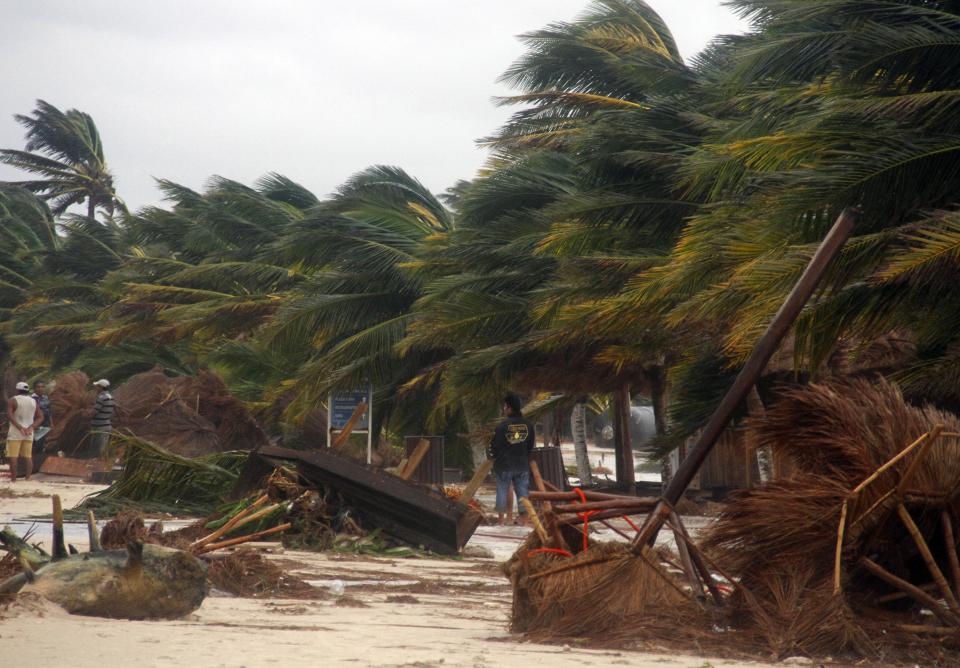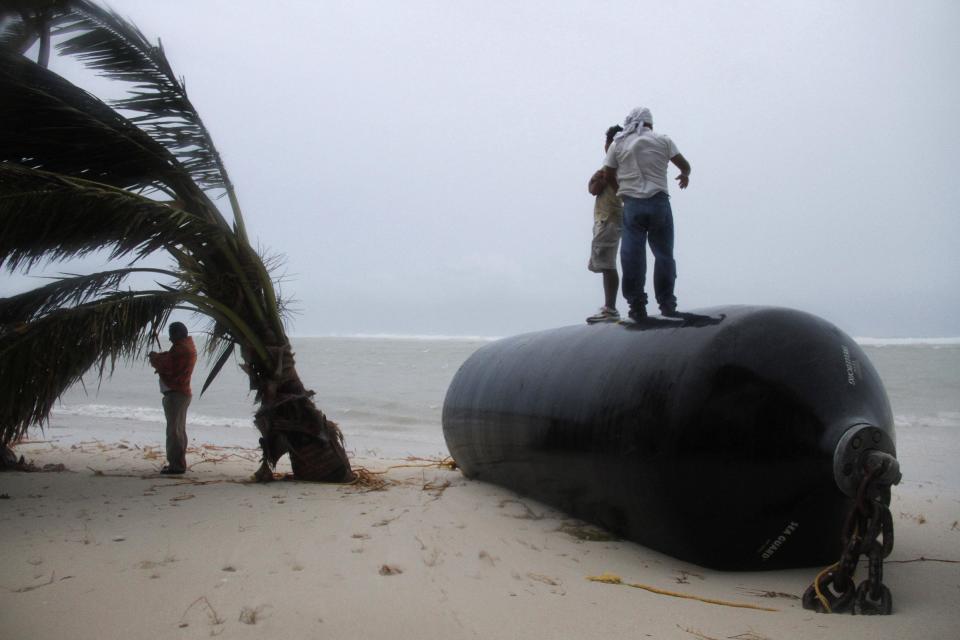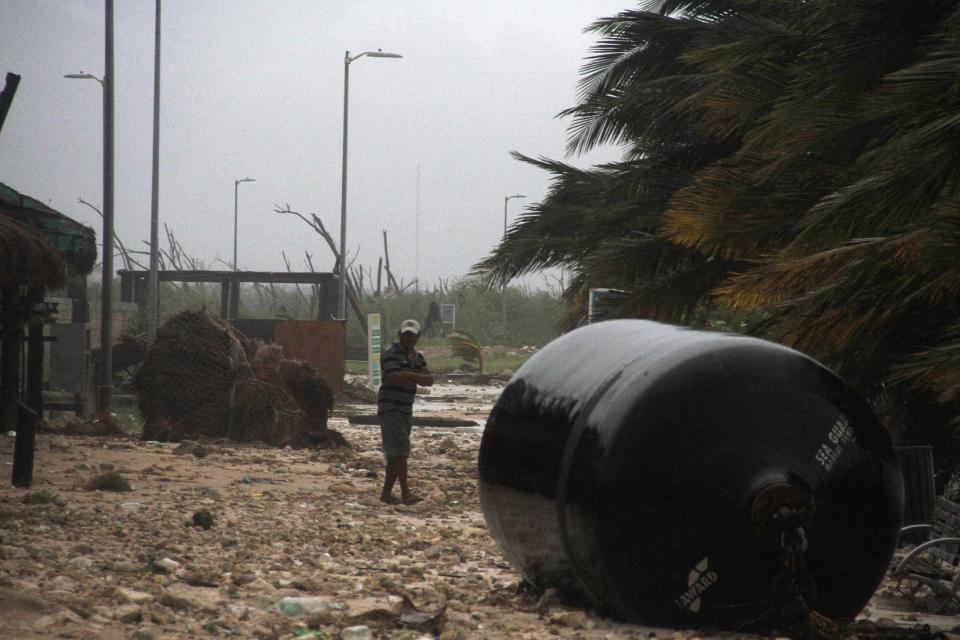Ernesto crosses Yucatan and picks up strength
CHETUMAL, Mexico (AP) — Tropical Storm Ernesto spun back over open water late Wednesday and began gaining strength after crossing Mexico's Yucatan Peninsula, where thousands of tourists and fishermen evacuated beach areas.
There were no reports of storm deaths or major damage, though Ernesto ripped down billboards, toppled trees and cut electricity as it hit the cruise ship port of Mahahual shortly before midnight Tuesday as a hurricane.
"In many places the windows were shattered," said Flori Cruz, a 27-year-old cook from the beach town of Mahahual.
Ernesto stayed south of the Yucatan's main resorts around Cancun and the Riviera Maya while moving across the peninsula, losing power during the day and being downgraded to a tropical storm.
But it strengthened as it began edging into the Bay of Campeche late in the day, and the U.S. National Hurricane Center said it had sustained winds near 65 mph (100 kph) by just before midnight. It was expected to gain more strength overnight and possibly grow into a hurricane again while moving across the southern end of the Gulf of Mexico in a region dotted with offshore oil rigs.
The hurricane center said the storm was about 15 miles (25 kilometers) north of Ciudad del Carmen, an administrative center for Mexico's state oil company, and it was moving west at 7 mph (11 kph). Ernesto was expected to stay close to the shore before making a second landfall Thursday evening near the key oil port of Coatzacoalcos in Veracruz state.
Petroleos Mexicanos, the state oil monopoly, said it was closely monitoring the storm, but did not report plans to evacuate any of about 200 oil platforms in the area. The federal Communications and Transportation Department closed two of the three main oil-exporting ports in the Gulf of Mexico because of the stormy conditions.
As Ernesto neared Ciudad del Carmen, Fernando Perera opened the restaurant he manages as usual, saying he wanted to work as long as possible, since more rain was expected after the storm passed.
"The wind is blowing pretty heavily, but it still feels normal," Perera said. "But people are staying away. What we fear is the weekend."
Officials in Veracruz set up about 20 shelters in preparation for the storm, said Victor Hugo Ceron of the state's civil defense agency. The port captain for Veracruz city, Enrique Casarrubias, said the port there was closed to smaller vessels. He also said the Carnival Elation cruise ship canceled a Wednesday stop in the city.
Ernesto has been the strongest storm to form in the Atlantic Ocean since the hurricane season began June 1, though stronger hurricanes hit Pacific coastal communities in May and June, causing at least three deaths, said David Zelinsky, a meteorologist at the U.S. hurricane center in Miami,
"Up to this point, most of the systems have been relatively weak," he said.
Chetumal, the capital of Quintana Roo state, was the closest sizable city to where Ernesto made its Tuesday night landfall and officials moved more than 1,300 tourists there from resorts in Mahahual, Bacalar and other spots on the Caribbean coast.
Soldiers and police also evacuated residents of low-lying coastal settlements in that state Tuesday, said Luis Gamboa of Quintana Roo's Civil Protection office.
The Federal Electricity Commission said blackouts affected about 85,000 people in the coastal communities, and schools were closed Wednesday in Quintana Roo.
At her grocery store in Mahahual on Wednesday, Joaquina Huerfano was trying to rescue whatever food and furniture was still in good condition after the place was flooded. Water stood 2 feet (60 centimeters) high at the shop.
"It's all flooded and dirty," Huerfano said. "Now we have to get to work and clean."
Meanwhile, Tropical Storm Gilma strengthened into a hurricane in the Pacific Ocean about 725 miles (1,170 kilometers) southwest of the southern tip of Mexico's Baja California Peninsula, with sustained winds of 75 mph (120 kph). The storm was not expected to threaten land, however.
___
Associated Press writers Adriana Gomez Licon in Mexico City; Miguel Angel Hernandez in Veracruz, Mexico; and Antonio Villegas in Tabasco, Mexico, contributed to this report.



